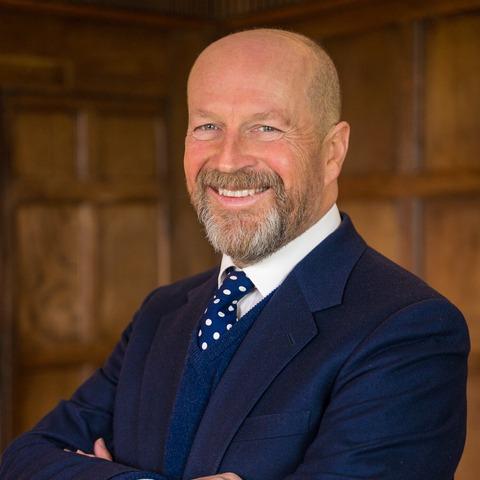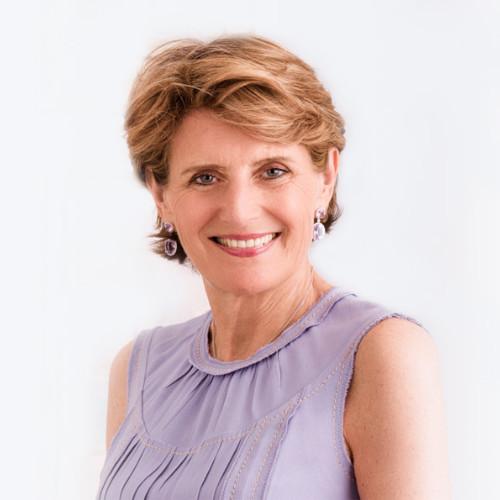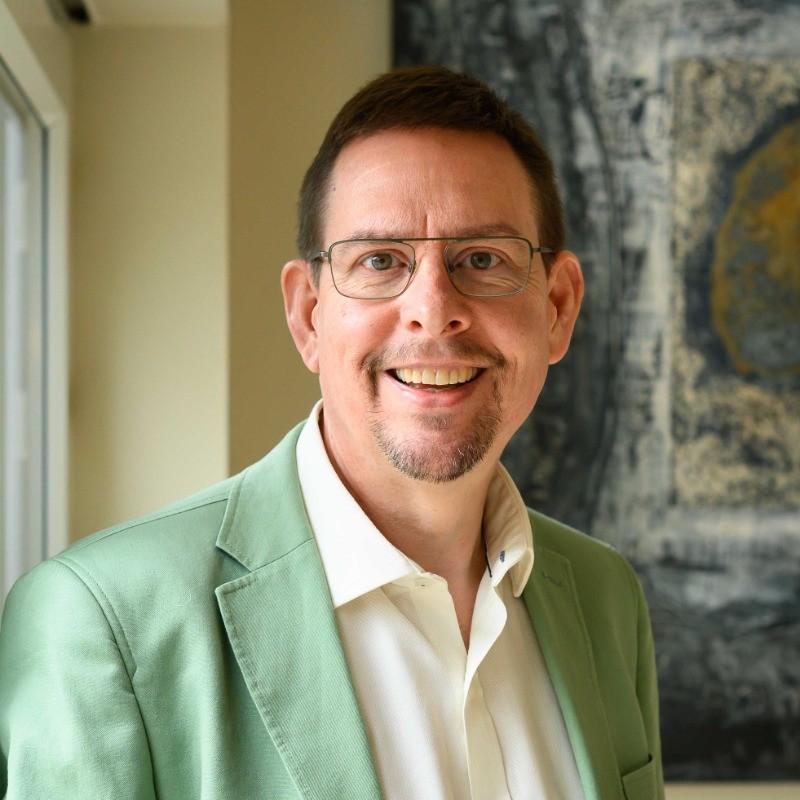Watch the episode
Listen to the episode
In part two of this special bonus episode of James Reed’s all about business, we’ve handpicked some of the most valuable insights from our incredible podcast guests. Since launching last October, we’ve had the privilege of hearing the powerful journeys, lessons, and strategies from some of the most successful entrepreneurs out there.
This week’s tips come from:
Alex Partridge, Founder of UNILAD and LADbible - ADHD Expert
Byron Dixon, Founder, Micro-Fresh
Todd Unger, Chief Experience Officer, American Medical Association
Kiki McDonough, Creative Director, Kiki McDonough Ltd
David Mitchell, Founder and Managing Director, dna-rB
Timestamps:
00:00 intro
00:27 takeaway 6 Alex Partridge
05:23 takeaway 7 Byron Dixon
09:16 takeaway 8 Todd Unger
12:10 takeaway 9 Kiki McDonough
15:37 takeaway 10 David Mitchell
Follow James Reed on LinkedIn: https://www.linkedin.com/in/chairmanjames/
James: [00:00:00] Welcome to All About business with me, James Reed, the podcast that covers everything about business management and leadership.
James: Thanks to you in under a year, we've hit 1 million listeners, and as an added thank you to our all about business community, here's bonus episode part two of our top summer takeaways. If you haven't heard part one yet, we'll see you back hereafter. Many of us get bursts of excitement about new ideas only to quickly lose interest.
James: What might that pattern really mean? This is top takeaway number six from my conversation with Alex Partridge. He talks about living with A DHD, creativity and redefining self understanding.
Alex Partridge: So I started a podcast, a business podcast called Walkaway Wiser, and I remember I had this idea and I impulsively.[00:01:00]
Alex Partridge: Spent a small fortune on seven cameras similar to the ones here. Dismantled my bedroom, dismantled my bed in my flat, and turned my bedroom into a soundproof studio. Hired all, bought all of the foam, um, tripods, lighting, everything. It looked, it looked really cool. No
James: freezer at this time.
Alex Partridge: I can see a pattern here though.
James: Yeah, go on. So,
Alex Partridge: you know, hired a producer, booked all of these guests. And three days later, the postman knocked on my door and he delivered all of these boxes of camera equipment. And I remember just sat there looking at all of these Amazon boxes and thinking, I don't wanna do this podcast anymore. I've lost interest in this podcast idea.
Alex Partridge: And I didn't understand, you know, the juxtaposition between the enthusiasm three days ago compared to now. And the. Person I hired to be the producer looked at me and said, when did you get your A DHD diagnosis? They recognized this boom and bust pattern [00:02:00] right before I did, even though I had experienced it so many times throughout my life.
Alex Partridge: That's what you call it,
James: boom and bust pattern.
Alex Partridge: Yeah. Well, you know, quite literally it's the boom in the early stage where it's like, this is my new life's purpose by the domain. Design the logo, you know, three days later bust your interest is gone. And that was the first time I really took those four letters seriously.
Alex Partridge: A DHD. And I dived into what A DHD was and I got assessed shortly afterwards and I had the meeting with the psychologist and, and she looked at me and said, your A DHD is clear as hell. So that was, that was how I, that's a diagnosis. Yeah.
James: So, so, so that's interesting. So you had this diagnosis. What did you do with it?
Alex Partridge: Well, I used it to be a lot kinder to myself immediately because there was this, with these boom and bust cycles, this sort of glitchy dopamine system that, that is quite common with A DHD is, is very. Easy to when something does come into your front and center, to get really excited by it [00:03:00] and take steps to action something, whether that is buying the domain or even jumping into a new relationship, starting a job, starting a business, and then you lose interest in it.
Alex Partridge: And what comes with that is a huge amount of shame because even though there is some humor in it, when you're in that height, you tell people about it. You tell your family, you tell your friends, you tell people on social media. It's like, this is my new business idea. This is what I wanna do. And then. You lose interest in the idea and you have to confront that person.
Alex Partridge: 'cause you'll, you'll meet them and they'll say, how's that new idea going? And you have to again say that I'm, I've lost interest in it. And you ghost people or you hide away. So there's loads of. Color and context that I was adding to to years and years and years of, of shame, that actually alleviated a lot of the self-esteem issues that I was facing simultaneously,
James: I suppose.
James: So you're confronting yourself too, or you're being kinder to yourself by recognizing that. So that sounded quite a helpful moment for you.
Alex Partridge: Yeah, I, [00:04:00] for me, as soon as I got the diagnosis, like many people do, I dived into Google and I wanted to know what is this thing I've been diagnosed with because I didn't know anything about it.
Alex Partridge: Um, and I Googled it and it said A DHD is a struggle with, it's a neurodevelopmental disorder. Characterized by traits of impulsivity, forgetfulness, and disorganization. It means you're gonna struggle with disorganization, you're gonna struggle with being late. It was all struggle, struggle, struggle and more struggle.
Alex Partridge: And it was enough to make anyone feel hopeless. And I reflected and, and those things are there, but also. From my experience and speaking to so many people in the community who have A-D-H-D-A-D-H-D is also creativity and pattern recognition and being great in a crisis. Being able to zoom out and see the big picture and spot details that other people miss being resilient.
Alex Partridge: Being a great [00:05:00] judge of character, having heightened intuition, being very loyal, being entrepreneurial people with an A DHD diagnosis, they're, you're four times more likely to start your own business. All of these things I think are tre, are a tremendous asset to society. So my. Goal was to balance the narrative around what it actually means to live with a DHD.
Alex Partridge: Imagine working
James: on a business for years with no sales at all. What keeps someone going in the face of that much rejection? This is top takeaway number seven from my conversation with Byron Dixon. He talks about persistence, risk taking, and the long road to breakthrough success.
Byron Dixon: So I came back, started my own business, and I guess he became a customer.
Byron Dixon: Yeah. You did, but I fell flat on my face for the first few years because why? What happened? Nobody bought micro freshs because it was about sustainability. So I had five years with zero turnover. Well, pushing at those
James: doors that wouldn't open. Yeah. Pushing at those doors. Five years of zero turnover. Five years with zero turnover.
James: So [00:06:00] we're establishing quite a few things about you by, I mean,
Byron Dixon: a lot of Kevin is the
James: linguists, but pretty determined. I mean, that's telling me.
Byron Dixon: Yeah, yeah, yeah. You're not a quitter though, are
James: you? I'm not a quitter, no. And I'm not afraid of failure as well. So why not? I mean, 'cause that's sort of haunt some people.
Byron Dixon: Yeah. I think naturally I'm a creative person. When I say creative don't mean like an artist. But I mean, yeah, I like to build things so I'm not scared of starting again. So I've never been afraid of everything crashing. And that's why as entrepreneurs we take risks. Yeah. And I take some big risks. 'cause if you don't try, you don't know.
Byron Dixon: That's right. And the risk is the bigger the risk for me, the bigger the thrill. But that's the biggest risk,
James: or the biggest
Byron Dixon: failure is actually not trying. I always think, and I always say I treat things like a plunge pool. So just hold your nose and jump in. It's gonna hurt and it's gonna. What you're expecting is to be cold.
Byron Dixon: Sure, yeah. That's because I'm not the sort that's 'cause your time in Denmark, it's not always cold anymore. That's right. And yeah, it's, I'm not the sort to be standing around the edge just dipping my toes in going, oh, it's a bit cold. I just go straight in [00:07:00] saying that when I'm on holiday, I don't go into the Cold Sea.
Byron Dixon: So practice, I don't do it, but in theory it gets me true. But, but in your
James: business life you do. So you were five years. So what was, what was the sort of breakthrough then? When did it
Byron Dixon: suddenly turn? The breakthrough was, I pitched all the retailers. Nobody's interested. And then I got a call from Next. Who?
Byron Dixon: Who? Up in Leicester. In Leicester. Yeah. And I'd been to all the people down here, m and s saved me a whole lot. And they said, can you come see us? And I said, yeah. And they said, can you go through that costing again? And I thought, that's an odd question 'cause I've been in like two years ago. I went through everything.
Byron Dixon: So I went through the costing. What it cost them to micro fresh, a pair of shoes. And they came back and said, right, we're gonna run a trial. And that was 2011. So 2011 they ran girls back to school shoes with micro freshs technology and they said, we'll need your swing tags. And I said, yeah, sure. Thinking I haven't got any swing tags by the time this comes out, I will have, uh, so if you are watching the next people you know and they launched girls shoes in 2011.
Byron Dixon: Right back to school girls really successful and they came back and said, we're gonna launch boys and girls a year [00:08:00] afterwards. So 2012, all their back to school shoes were micro pressed and they still are today
James: and they're a hugely successful company, next successful and obviously being an important customer.
James: But so their calculation when they said what you run the costs was that, that they must have been losing product or. There must have been some sort of Yeah. And, um, trade off where they could see by using micro fresh That's
Byron Dixon: right. They would have,
James: would have better economics.
Byron Dixon: That's right. That's right. And I don't know, maybe something happened the year before and.
Byron Dixon: They lost market share and somebody internally said, we need something, a differentiator. And they thought, where's that guy? So that was 20 11, 20 12. So they
James: remembered you from
Byron Dixon: two years before. Two years before, yeah.
James: It's just, that's a real message there. I mean, I'm, I'm often telling people it's not a question of, you know, if you're gonna make the sale, it's when keep, keep going, keep going, but keep, this is a very good example of that.
Byron Dixon: Yeah.
James: If, like me, you run a business. Or manage a team, you'll know how important it is to hire great people. Over the last 65 years, readers work with thousands of businesses around the world helping them to recruit and to [00:09:00] grow. This is what inspired us to create read ai, your new AI hiring agent. It's here to save you money, to save you time, and to help you get the right match.
James: Whether you are hiring your first team member. Or your 50th read, AI is here. To make it easier, try it free for 28 days, exclusively available during our beta period. Go to read AI and get started. Read AI your higher power. We all know the frustration of trying to buy something online and hitting obstacles.
James: What if the ideal customer experience could be summed up in just one lyric? This is top takeaway number eight from my conversation with Todd Unger, who talks about frictionless service, technology, and the future of customer
Todd Unger: experience. So much effort needs to go in into making that process. Smooth and effortless for the cons, uh, customer before you even get to the service part.[00:10:00]
Todd Unger: And I think service is, uh, it's not just the thing that happens at the end. We, we think of service as integrated throughout the journey so that you're answering questions and issues that people have a along the way so you don't really need to deal with them at the end. And, and if there is a problem, you do need to be prepared for that.
Todd Unger: And it's not just, uh, human interactions anymore. It's technology driven by AI that helps you detect those service problems.
James: Yeah. Well, we'll come onto that. 'cause I think that's so interesting what's happening with AI and how that might change things. Um, you use the word friction and frictionless those words.
James: I mean, that's a key thought of yours, isn't there? Friction? It is. It absolutely is. And it comes in all different ways. Does that, um, what, what shouldn't. We'd be trying to do when we encounter friction as, as business people.
Todd Unger: Well, I, I, I joke that there is an actual theme song, [00:11:00] uh, for customer experience written by Ariana Grande in Seven Rings.
Todd Unger: I see it. I like it. I want it. I got it. That's the job of business and chief experience Officer. Couldn't you ing that,
James: Todd?
Todd Unger: I think that's very good. Say it again. I like that she had no, she had no idea when she wrote it. I see it. I like it. I it, I got it. I got it. She's talking about a very good summary.
Todd Unger: Yeah. She's talking about getting, uh, gling for herself and her friends, and I think it's a perfect description. What people want from you when they're trying to buy something. I mean, have you ever been trying to do something online and you're like, I just want to give you my money and buy this thing. Why are you making it so hard for me?
Todd Unger: Um, go back to your own experience. Like you might be scrolling through something, you might see an ad that you think, think, I wasn't even in the market for that. But of course, through targeting and through algorithms, those platforms know you're interested in that. [00:12:00] Then you see in like three seconds basically whether or not they've captured a message that is gonna get you to click to learn more.
Todd Unger: And if you're lucky, you're gonna hit buy now. You're gonna, uh, you know, auto pay through Apple Pay or Google Pay or whatever, and you can literally be. In and out the door in 10 seconds. That's the objective of the ten second customer journey. The temptation
James: is to spend big, but what's the smarter first step?
James: This is top takeaway number nine from my conversation with Kiki McDonough. She talks about starting small testing ideas and building a brand carefully.
Kiki McDonough: I think the most important thing is to say, say, don't start big. Right? You know, you've say you've borrowed. 5,000 pounds from the bank, or 10,000 I whatever.
Kiki McDonough: You then don't think, right? Great. I've now got that money and I'm gonna do this, this, this, this, and this. No, stop. My advice would be stop right there and think seriously about who's going to buy your [00:13:00] product, how they're going to buy it, what market are you aiming for, and um. Do not charge into a website and then find that no one's buying from it because no one knows anything about you.
Kiki McDonough: So I would. Always say to someone, if you're going to make, spend that first init a small sum of money on making samples of your product. Test it on your girlfriends, test it at a, have a, have a party, you know, with 50 people and say, can you tell me exactly what you think? These are the prices. It's a little bit of market research before you spend too much money, because before you know it, things are so expensive.
Kiki McDonough: Now it's gone. The money's gone, right? And you've got nothing to change. Or just buying the
James: raw materials is so expensive.
Kiki McDonough: Well, the money's gone because you've set up a website, you've done this, you've done that and everything, and you're ready to go, and you don't actually know who's going to buy your product.
James: So Kiki, if you are starting out in as a, a new business and your new jewelry business, a young person building a [00:14:00] business, and they want to move up into the sort of higher price points and build a brand. That is maybe a premium brand. Um, how, how, how would you advise them setting about doing that?
Kiki McDonough: So start small, start with a collection, which you can call it.
Kiki McDonough: You can call it a name or whatever, some name or other. And then you have to make sort, you make 10 pieces and. You test drive it, you ask your friends around or whatever, and you don't price it to such an extent that you know that none of the people you are going to ask is going to possibly afford it.
Kiki McDonough: Once you've built a little bit of trust in your brand and people start liking what they're seeing and begin to buy it, then you can do a few more things that are a little bit more expensive. But I think if you think you're gonna do that in the space of a year and a half, then you need to step back and just, you know, just go a little bit slower.
Kiki McDonough: Because I think it, I think. You have to have that trust in your brand.
James: So when you say a collection, so you have a [00:15:00] brand,
Kiki McDonough: your
James: brand's, Kiki McDonald, then you, you'd have a collection, maybe each year you'd do a collection or you, well, so you say 10 pieces. What would, what typically would, yeah, so if
Kiki McDonough: you're starting out, I would two or typically would it
James: may, it consists of.
Kiki McDonough: Well, it depends what sort of jewelry designer you are, what sort of jewelry you like selling, but I think you should start with sort of 10 pieces that you think, uh, people who your friend, you know, your friends can afford or you, you maybe ask your friends with their parents and they might buy them for their birthday or something like that.
Kiki McDonough: I think you shouldn't rush in and immediately. Design things, 10 things that cost 10,000 pounds. I mean, I do four collections a year, or five, four collections a year, five, but I'm, you know, I've been going for 40 years, so I know that the market is there for my brand.
James: Many people think marketing is just about ads and branding, but what if it's actually something far more fundamental to a business?
James: This is top takeaway number 10 from my conversation with David Robertson Mitchell. He talks about [00:16:00] the true link between brand.
David Mitchell: Marketing and cash flow. We talked about the difference between brand and branding. Marketing is is another area where depending on who you talk to in that or in that, in that industry, you will get their perspective on how the, how the marketing works.
David Mitchell: So what's the difference between branding and marketing then, in your view? So brand, brand is, that, is, is. How you get that thought into people's heads. Marketing. The best description of marketing I've ever come across was from the London Business School, a gentleman called Tim Ambler, who used to be in charge of marketing for Diageo, and he did a lecture on how to talk about branding to, to, to about marketing, to finance directors.
David Mitchell: And he said that, that go on the, the, the, the, the definition of marketing you should use is that marketing is the sourcing and harvesting of cash flow. Right, and marketers should know who's got the money out there, who's got the need, come up with products and prices and promotions and positioning and, and techniques sourcing
James: [00:17:00] and management of
David Mitchell: cash flow, servicing, harvesting, and
James: harvest.
James: Sorry. So, so come up with creative ways, sourcing and harvesting of cash
David Mitchell: flow. Harvest, harvest that cash out in the marketplace from, from the audience, but
James: it's there. You wanna bring it in
David Mitchell: and then deliver it to the finance director as, as cashflow. Now to me, when you go and talk to a marketing person, you'll, you'll get their particular lens on their particular discipline.
David Mitchell: Within marketing, yes, you'll get their particular metrics, which means nothing often to the business itself. But if you start to look at marketing as a sourcing and harvesting of cash flow, you are linking the effect effectiveness of marketing directly to something that matters really, really important to the business.
James: But that's quite hard to then link to putting a Guinness ad on the telly, isn't it? I suppose. I mean, how did the finance director of, you know, swallow this?
David Mitchell: Well, I think, I think it, you know, as, as long as you can start to demonstrate. You know, the overall mix. People buying it. Yeah. People are buying it and you're increasing your sales.
David Mitchell: Then it links back to cashflow. But it does show that, you know, and that I, I use this with various finance directors when I was in, in marketing roles and, you know, [00:18:00] the, the, the, the, the first of all you explain it and the, this sort of an, ah, no one's ever explained marketing to me like that before.
James: Well, I haven't heard that, explained like that before.
James: I think it's really good. Interesting. So the sourcing and harvesting of cashflow, but also what it does. I'm thinking as it gets the marketing people thinking much more strategically about what they're there for. They're not there to make a pretty ad with pink and yeah, a love heart on it. They're there to think about support the business.
James: How are we gonna grow this business, reach more customers and be super relevant. Thanks for listening to Summer Takeaways. I'm your host, James Reed, chairman and CEO of Reed, a family run recruitment and philanthropy company. If you'd like to find out more about Reed, all links are in the show notes. See you next time.
This podcast was co-produced by Reed Global and Flamingo Media. If you’d like to create a chart-topping podcast to elevate your brand, visit https://www.Flamingo-media.co.uk








